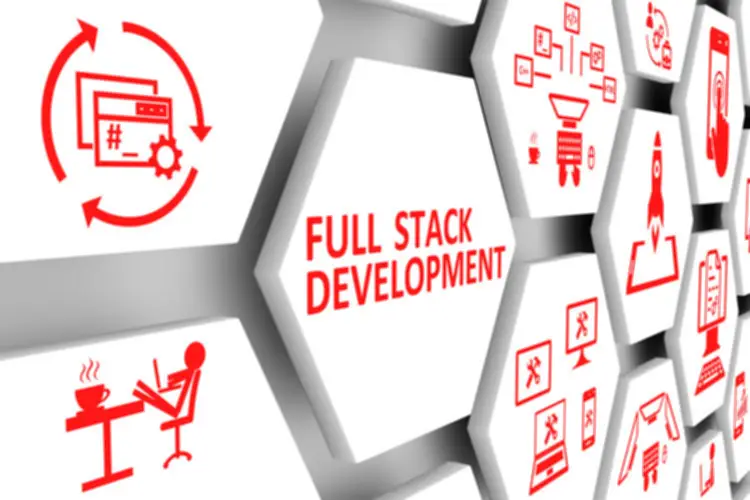Serverless Architecture: What It Is & The Way It Works
Monitor your serverless applications and companies to optimize efficiency, availability and safety. Any embarrassingly parallel task is an effective use case for a serverless runtime, with each parallelizable task leading to one motion devops predictions invocation. The commonest use case of serverless at present is supporting microservices architectures. The microservices mannequin is targeted on creating small companies that do a single job and talk with each other by utilizing APIs. In the stressed panorama of cloud expertise, a paradigm shift is afoot, and you can hear the word “serverless” artfully dropped into nearly each meaningful dialogue of the subject. This innovative approach, where developers can focus solely on code without managing infrastructure, represents a pivotal flip in how we conceive and implement applications.
Monitoring And Debugging In Serverless Structure
Understand and configure your capabilities’ retry habits to deal with transient failures effectively. This involves optimizing algorithms, decreasing useful resource consumption, and using asynchronous processing. Understanding how knowledge storage and interaction with exterior systems are orchestrated within a serverless framework is essential for successful utility development. Serverless computing limits the sources obtainable to functions, corresponding to execution time, reminiscence, and concurrent executions. Each microservice could be developed as a serverless perform, simplifying the management and scaling of individual components. Engineers who use serverless can simply deploy their code with out having to handle any servers, which helps accelerate delivery cycles and rapidly scale firm operations.

Serverless Safety: The Top Challenges
In a serverless architecture, developers can focus solely on writing and deploying code without worrying about the underlying server infrastructure. Companies that want to reduce their go-to-market time and build scalable, lightweight applications can benefit greatly from serverless. But if your purposes involve a lot of continuous, long-running processes, digital machines or containers will be the better choice. In a hybrid infrastructure, builders could utilize containers or digital machines to handle the bulk of requests however hand off sure short-running duties, such as database storage, to serverless capabilities.
Simplify Growth With The Benefits Of Serverless Structure
This elasticity is a big boon for purposes that have fluctuating or unpredictable workloads. Event-driven architecture (EDA) is a software design sample that emphasizes the manufacturing, detection, and consumption of occasions. Examples of occasions embody user actions, information updates, messages, and even system-level occasions like a model new file being created. For instance, AWS Lambda mechanically collects metrics similar to invocation depend, period, and error rates. These metrics may be visualized in the AWS CloudWatch Metrics console or used to set up alarms and alerts. It is important to regularly update and patch any third-party dependencies to address known security vulnerabilities.

It allows for a more agile and environment friendly growth course of by abstracting away the underlying infrastructure, enabling builders to focus solely on their code. Serverless architecture assists organizations in eliminating the need for expensive traditional servers. This revelation opens new potentialities in software growth and scalability, because it eradicates the need for server administration, facilitates automated scaling, and reduces operational overheads. Developers can concentrate on writing enterprise logic quite than getting bogged down by the infrastructure setup. The serverless service fashions supply out-of-the-box backend code options that accelerate the creation and deployment of web apps.
Serverless architectures allow faster development cycles and quicker time-to-market. Serverless computing has streamlined utility development by abstracting away infrastructure concerns. With serverless, developers can give consideration to writing modular, event-driven functions that perform particular duties rather than worrying about the underlying infrastructure. Serverless allows developers to build applications by composing individual functions, every answerable for a selected task. Each operate encapsulates a chunk of enterprise logic and can be independently developed, tested, and deployed.
Traditional server-based architectures or containerization applied sciences like Kubernetes may be more suitable in such circumstances. If your application calls for consistent excessive performance, such as real-time gaming, high-frequency buying and selling, or machine learning model training, serverless could not provide the required efficiency traits. One of essentially the most commonly cited drawbacks of serverless capabilities is chilly begin latency.
This might imply combining different types of architecture — traditional server-based, cloud, and serverless — in a means that most carefully fits your needs. In a serverless architecture, these features are run only when needed — when a customer initiates the KYC or KYB course of. This makes the method extremely efficient as you’re only paying for the compute assets when a verification is being carried out. Moreover, as these checks are event-driven and don’t want to maintain up a state between totally different capabilities, the serverless mannequin is a perfect match.
It’s worth noting that whereas chilly begins can impact the efficiency of your serverless application, they’re typically much less significant for functions with frequent invocations. Asynchronous processing is a way used to decouple the execution of tasks from the request-response cycle. It allows the serverless utility to handle a number of tasks in parallel, bettering total performance and responsiveness. Environment variables enable builders to configure serverless features dynamically with out hardcoding values into the code.

In this part, we’ll delve into some of the key challenges and strategies for mitigating them. Serverless architecture operates on a fundamentally completely different execution model compared to traditional server-based approaches. In this part, we are going to delve into the intricacies of how serverless architecture works, inspecting its execution model, integrations, dependencies, and crucial safety considerations. Serverless structure represents a paradigm shift in how applications are constructed and deployed, providing quite a few advantages over conventional server-based approaches. Forecasts point out that the market will continue to expand from 2024 to 2032, with a projected Compound Annual Growth Rate (CAGR) of 30%, reaching a price of USD ninety three.19 billion by 2032. For order management in your utility, you can use an orchestration service to coordinate tasks like order validation, cost processing, stock replace, and user notification.
- By using such frameworks, you can write code once and deploy it to a number of cloud providers, lowering the chance of vendor lock-in.
- The Serverless Framework is a popular open-source framework that supports multiple cloud suppliers, including AWS, Azure, and Google Cloud Platform.
- It’s stunning to find Coca-Cola‘s name on the list, however the firm was among the earliest to experiment with serverless know-how for its merchandising machines.
- By decomposing purposes into granular features, builders can obtain better scalability and maintainability.
Serverless Architecture is an strategy in cloud computing that permits developers to construct and run services without the necessity to manage the underlying infrastructure. Serverless architecture is a driving drive behind the cloud-based motion that many organizations turn to for their 21st-century digital transformation. Moving away from in-house server administration makes creating code simpler and more efficient.
In this instance, a serverless function written in Python receives an event containing the image to be processed. The cloud provider automatically scales the infrastructure to handle concurrent requests, making certain optimal performance. As the cloud provider handles the scaling of your application, you don’t have to worry about provisioning further sources or configuring load balancers.
Furthermore, serverless architectures facilitate rapid improvement and deployment cycles, enabling teams to iterate on their purposes more efficiently. With the burden of infrastructure administration lifted, builders can focus on delivering worth through their code, accelerating time-to-market and fostering innovation. Serverless architectures are well-suited for web purposes because of their auto-scaling capabilities and cost-efficient hosting model. However, with serverless computing, builders can offload infrastructure administration to the cloud supplier, allowing applications to automatically scale resources based mostly on incoming visitors. This ensures excessive availability and optimum efficiency with out the necessity for manual intervention or over-provisioning.